
A collection of fourteenth- to seventeenth-century earthenware and stoneware sherds found in London. (Ex-Burnett Collection; photo, Gavin Ashworth.) For a museum registrar, an embryonic storage problem; for a ceramics historian a crock of gold.
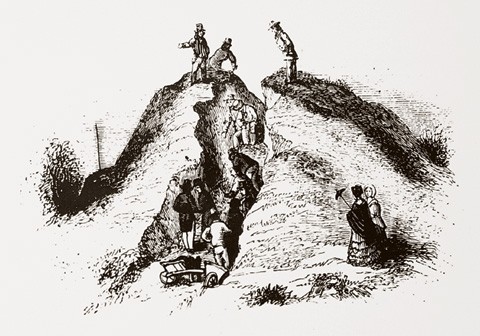
Engraving, England, nineteenth century. (Illustrations courtesy of the author unless otherwise noted.) Ceramic collecting Victorian style: ruining a Bronze Age burial mound.
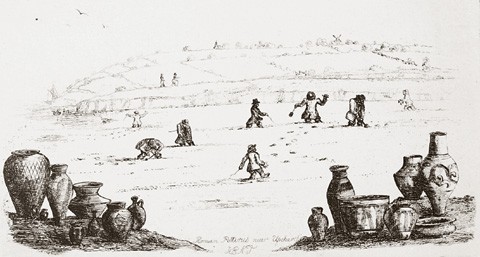
Engraving, England, nineteenth century. Sending one’s servants groping for Roman pots in the mud of the Kentish marshes.
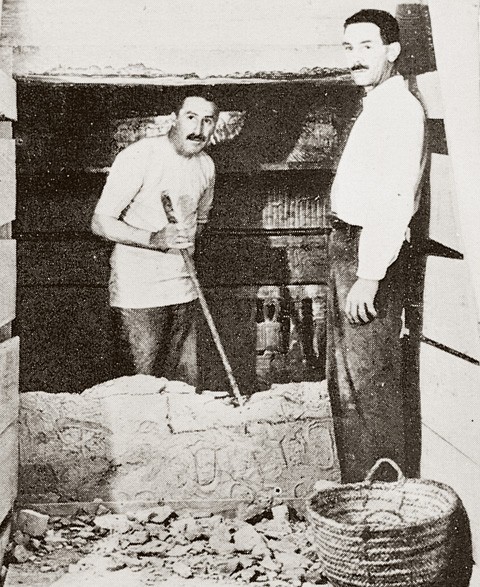
Howard Carter and Arthur Mace, 1923. One the robbers missed. Carter and Mace are demolishing an inconvenient wall in the tomb of Tutankhamun.

Giovanni Belzoni’s watercolor showing his workmen moving the “Young Memnon” from Thebes, 1816.

Stone sculpture. With help from friends in high places, British Consul General Henry Salt made this delivery to the British Museum in 1817.
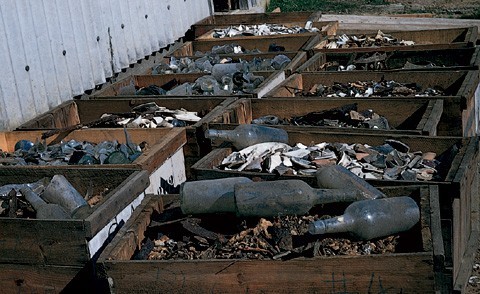
Archaeological artifacts at Colonial Williamsburg. An awkward inheritance: part of the unwashed and unloved legacy of digging in Williamsburg prior to 1957.
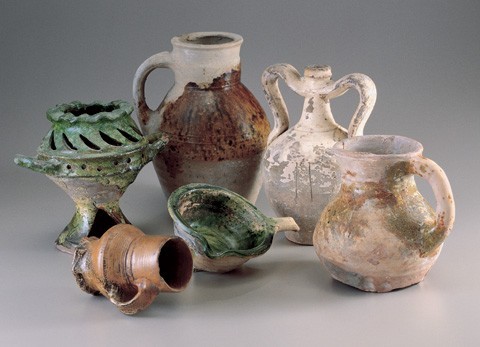
A group of sixteenth- and seventeenth-century earthenware and stoneware vessels. (Noël Hume Collection; photo, Gavin Ashworth.) Like daffodils and oak trees, these are the kinds of ceramics that only come out of the ground.
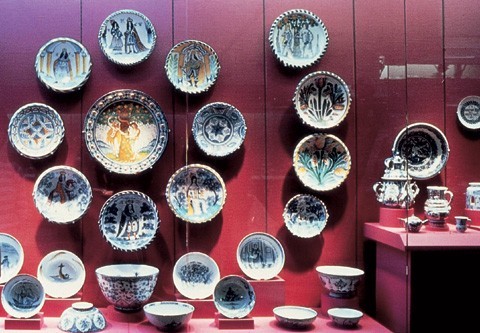
Museum exhibit of seventeenth- and eighteenth-century English delftware, a presentation designed to display more than to instruct. (Courtesy, Colonial Williamsburg.)
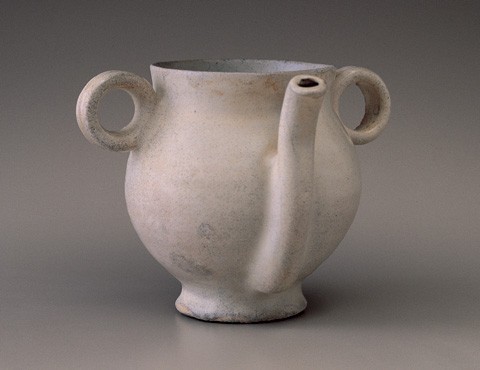
Caudle or posset pot, London, ca. 1640. Tin-glazed earthenware. H. 5 1/2". (Noël Hume Collection; photo, Gavin Ashworth.) The importance of a ceramics collection depends less on what it cost than on what its pieces have to say about themselves and the times in which they were made and used (see figs. 11 and 12).

Reverse of plate, Staffordshire or Yorkshire, ca. 1780. D. 9 1/2". Creamware. (Noël Hume Collection; photo, Gavin Ashworth.) This plate bears the ghostly imprint of the painted decoration from a plate stacked beneath.
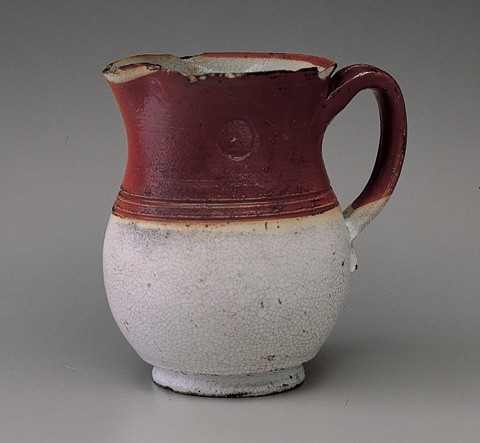
Jug, London, early eighteenth century. Stoneware with both salt-glaze and tin glaze. H. 5". (Noël Hume Collection; photo, Gavin Ashworth.)

A Romano-Gaulish Samian ware bowl. The kind of object on whose exhibit case small boys were supposed not to breathe.
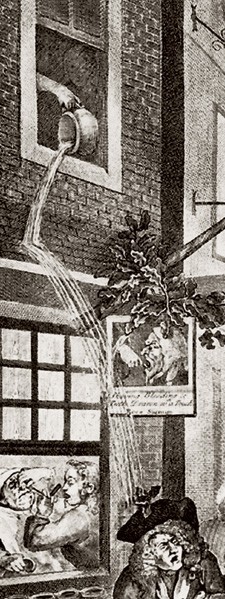
Detail from William Hogarth’s (1697–1764) Night from the series The Four Times of the Day, 1739.
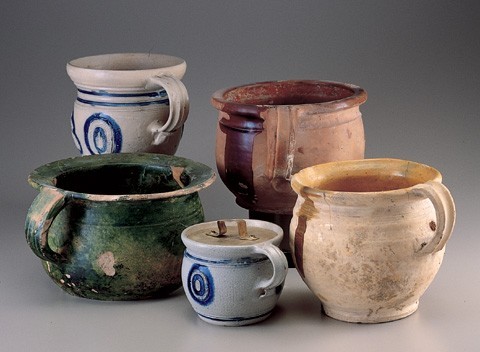
Group of seventeenth- and eighteenth-century stoneware and earthenware chamberpots. (Noël Hume Collection; photo, Gavin Ashworth.) Both Hogarth (fig. 14) and Gilray (fig. 16) portrayed these unmentionable ceramic vessels with disarming candor.
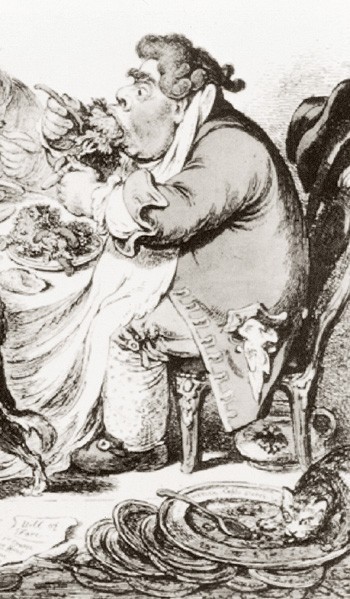
Detail from James Gilray’s (1757–1815) Germans Eating Sour-Krout, colored etching, 1803.
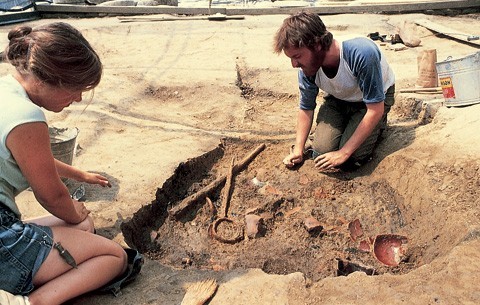
Archaeological excavation of earthenware fragments from the production of Virginia potter Thomas Ward at Martin’s Hundred, Virginia, ca. 1622.
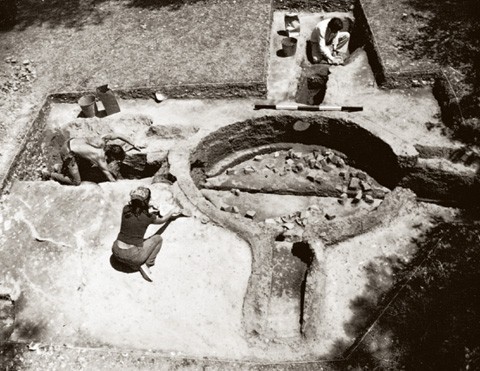
Photograph of archaeological excavation at Morgan Jones Kiln Site, Westmoreland County, Virginia, ca. 1672. (Photo, William Kelso.)
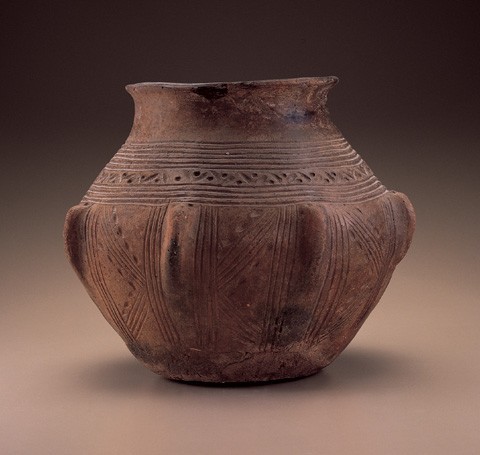
Cinerary urn, Anglo-Saxon, 500–600 a.d. Unglazed earthenware. H. 10 3/8". (Courtesy, Chipstone Foundation; photo, Gavin Ashworth.) This example is not every collector’s dream pot.

Dish, Rouen, France, ca. 1780. Tin-enameled earthenware. L. 13". (Noël Hume Collection; photo, Gavin Ashworth.) Even this modest eighteenth-century dish becomes a marketable celebrity once it gets its picture in the paper.

Pipkin, probably England, 1640–1670. Lead-glazed earthenware. H. 6 3/4". (Noël Hume Collection; photo, Gavin Ashworth.)

Graybeards galore. Museum storerooms were and are replete with pots the public never sees. (Photo, William Gordon Davis.)
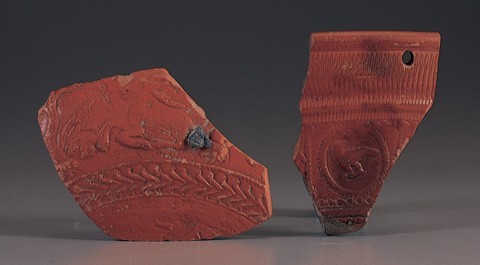
When a Roman someone cared enough to mend her very best. (Noël Hume Collection; photo, Gavin Ashworth.)
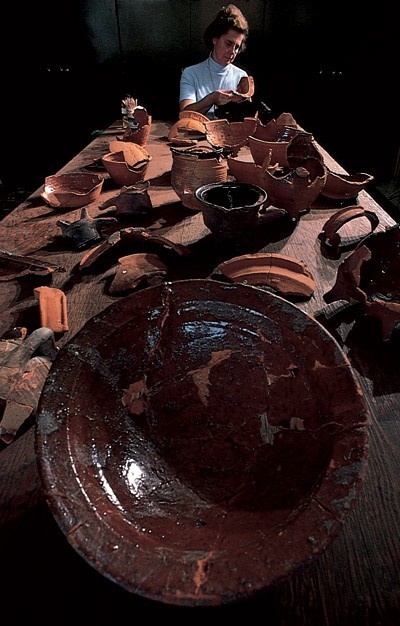
When Virginia potter Thomas Ward tried to fix his worst. (Courtesy, National Geographic Society; photo, Ira Block.)
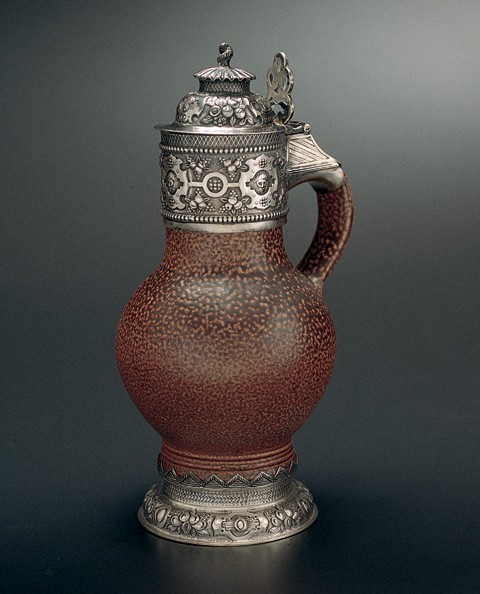
Jug, probably Doulton, ca. 1910. Stoneware with silver mounts. H. 11 3/4". (Noël Hume Collection; photo, Gavin Ashworth.)To pull or not to pull the petals off a gilded lily? That is the question.

Colored engraving of a Mender of Porcelain, London, England, 1799. (Private collection; photo; Gavin Ashworth.)
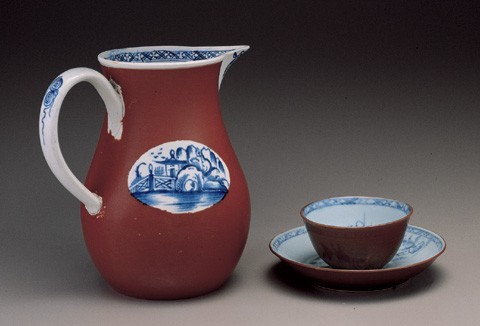
(Left) Jug, Staffordshire or Yorkshire, ca. 1785. Pearlware. H. 6 3/4". (Right) Tea bowl and saucer, Ching-tê-chên, China, ca. 1751. Hard-paste porcelain. (Noël Hume Collection; photo, Gavin Ashworth.) Pearlware and porcelain in the “Batavian” style, yet neither piece was made there.
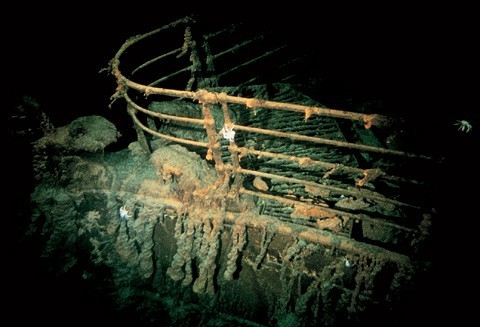
Photograph of the bow of the Titanic. (Courtesy, Woods Hole Oceanographic Institution.) Asleep in the deep, R.M.S. Titanic as first seen—before a Virginia judge issued a license to an entertainment company to remove artifacts.

Underwater photograph of a Titanic chamber pot. (Courtesy, Woods Hole Oceanographic Institution.) What price would a dealer put on this chamber pot, which might have been used by John Jacob Astor?

A group of earthenwares and stonewares excavated from the Mary Rose (1545). (Courtesy, Margaret Rule.) Although these vessels were brilliantly excavated and conserved, like the Titanic, the Mary Rose was a mass grave site.

Underwater photograph of porcelain cargo. (Courtesy, Christie’s.) Without saving the shreds of their packing material, were the Geldermalsen’s porcelains worth salvaging?
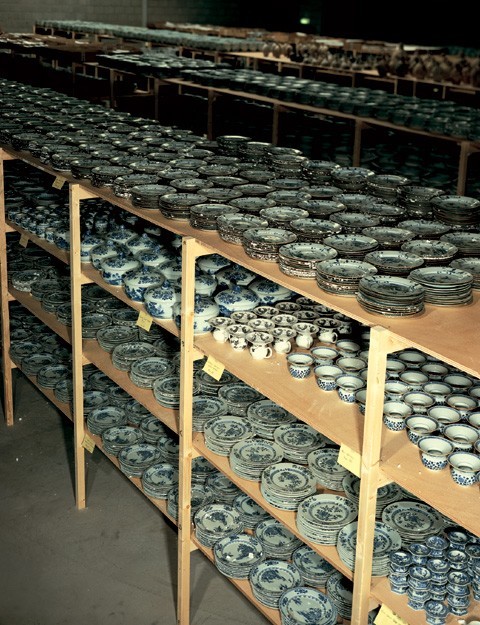
Photograph of the Geldermalsen’s porcelain at Christie’s Amsterdam. (Courtesy, Christie’s.) Nearly two hundred years late, the porcelain awaited buyers, few of whom, if any, arrived wearing knee-britches or wigs.

Earthenware sherds from a ca. 1760 French wreck. (Sherds courtesy of E. B. “Teddy” Tuckev; photo by author.) Because they were not found by professional archaeologists, these fragments have been deemed worthless.
